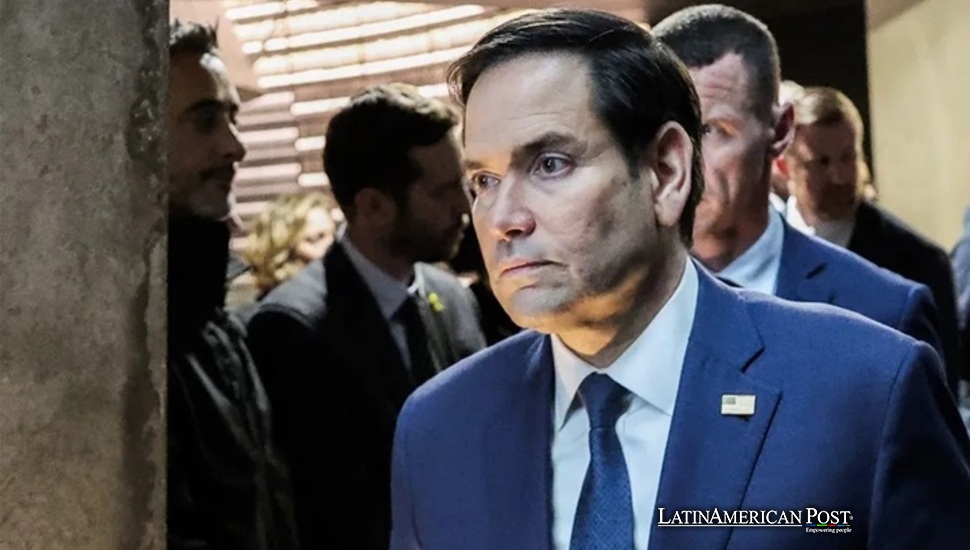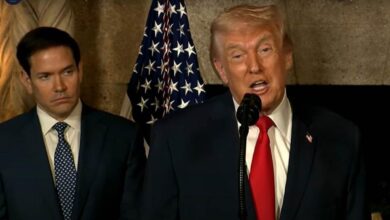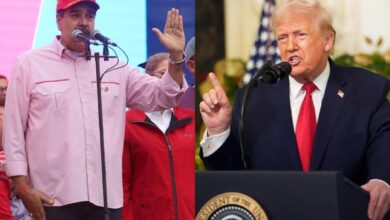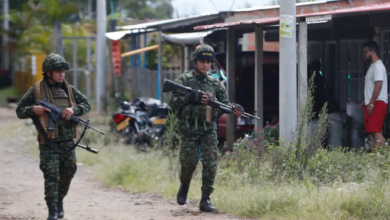Latin America Braces for Newly Labeled Cartel Terrorists

As eight prominent Latin American cartels are labeled terrorist organizations by the United States, a new spotlight shines on these sprawling criminal groups. Their histories stretch back decades, and their networks span continents, posing fresh questions about hemispheric security and cooperation.
A Changing Threat Landscape
The announcement designating eight Latin American cartels as global terrorist organizations has underscored just how blurred the line has become between traditional transnational crime and acts of terror. Initially viewed primarily as drug trafficking syndicates, some of these groups employ tactics—such as targeted killings and systematic intimidation—that many feel parallel to terrorist methodologies. The designation follows an executive order signed years ago that pledged to combat cartels for their “campaign of violence and terror.”
Over multiple decades, drug cartels mushroomed into highly organized operations capable of evading authorities and leveraging corruption to protect their activities. Using secret routes, modern weapons as well and large money-laundering networks, these groups increased their control beyond drugs into illegal trades like arms trade, human smuggling, and extortion. Calling the cartels terrorist groups raises efforts to block their funds and fine their financial backers while uniting global support to counter them.
Much of their power comes from Latin America’s extensive territory. Whether operating out of mountainous regions or significant port cities, these criminal enterprises quickly respond to law enforcement pressure by shifting their activities to new areas or forging alliances with local gangs. Historically, transnational coordination has proven difficult as each nation faces local political challenges. The latest U.S. policy might clear the way for tighter bonds with Latin American governments that seek fresh drive to break up such groups. The term also brings up issues about possible unintended effects, like stopping talks or local outreach projects once authorities limit their view of these groups to a terrorism fight.
Origins in the War on Drugs
Latin America’s cartels did not spring up overnight. Instead, they trace their origins to decades of shifting drug supply routes and rising global demand, especially in the United States. During the late 1960s and early 1970s, as the U.S. government increased its crackdown on drug trafficking from Mexico, suppliers in South America stepped in to meet a soaring appetite for marijuana, particularly cocaine. Colombia soon emerged as a central hub, refining raw coca leaf from neighboring countries before shipping it north.
By the 1980s, South American cartels had become the world’s primary source of cocaine, feeding a booming U.S. market. The rise of legendary crime groups turned small-time farmers and smugglers into billion-dollar enterprises controlling smuggling routes, local officials, and entire communities. In the process, they escalated violence in major cities and border regions alike. The cartels’ grip on the cocaine pipeline gave them strong influence over narcotics as well as the social and political structure of their countries. In response, the U.S. started a War on Drugs.”
Initially declared in 1971, it intensified over the decades through legislation that increased prison sentences for drug offenses and treaties that enabled the extradition of suspected traffickers. While the clampdown helped break up some major cartels, it forced criminal groups to change, split, or expand their crimes. Some cartels turned to synthetic drugs like methamphetamine or fentanyl; others began kidnapping, smuggling migrants, or laundering money, boosting their control and creating new income.
Tensions between Washington and capitals across Latin America often flared around responsibility. Many Latin American leaders argued that the insatiable U.S. demand for drugs was the real driving force behind the cartels. At the same time, the United States insisted that local authorities could do more to root out corruption and weaken cartel strongholds. As years passed, violence raged in several countries, with cartels inflicting terror on communities to maintain control. Now, with this terrorist designation, the U.S. is signaling an even more aggressive approach, potentially raising the stakes in the regional fight against organized crime.
Eight Newly Named Terror Organizations
Tren de Aragua: Founded around 2009 or 2010, Tren de Aragua is based in Venezuela but operates across Latin America and even the United States. Linked initially to prison gangs, it evolved into a sprawling crime syndicate controlling drug routes and carrying out kidnappings and extortion. Authorities contend that its expansion into Brazil, Colombia, and beyond marks a new phase of cartel globalization, reflecting how quickly criminal groups replicate their structures across borders.
Mara Salvatrucha (MS-13): While not a cartel in the traditional sense, MS-13’s reputation for brutal tactics drew U.S. authorities’ attention. Born in Los Angeles in the 1980s among Salvadoran refugees, deported members brought the gang back to El Salvador, where it developed a pervasive presence. MS-13 relies on violence and extortion, primarily targeting local communities. Although not chiefly involved in high-level drug trafficking, its criminal footprint in Central America and U.S. cities is extensive.
Cartel de Sinaloa: Considered among Mexico’s oldest criminal organizations, the Sinaloa Cartel gained global notoriety under figures like Joaquín “El Chapo” Guzmán. Since the 1970s, Sinaloa has orchestrated a robust trafficking network for narcotics ranging from marijuana to methamphetamine. Its success is built on formidable smuggling tunnels, money-laundering expertise, and alliances with other criminal factions.
Cartel de Jalisco Nueva Generación (CJNG): Formed in Mexico around 2009, CJNG quickly gained a reputation for brazen violence against rivals and government forces. The group traffics cocaine, methamphetamine, along with fentanyl. CJNG operates in all 50 U.S. states, showing advanced methods. In the past decade, it fought other cartels for power, causing many drug-related killings in Mexico.
Carteles Unidos and La Nueva Familia Michoacana: Both groups originated in the Mexican state of Michoacan. Carteles Unidos goes by multiple names, reflecting internal alliances among more minor factions, while La Nueva Familia Michoacana broke off from the original La Familia Michoacana after a power vacuum. These organizations still traffic synthetic drugs, yet one of their unique threats is their infiltration of local industries, specifically avocado farming, which forms a significant part of Michoacan’s economy.
Cartel del Noreste: Known by acronyms like CDN or linked to the remnants of Los Zetas, the Cartel del Noreste was formed in 2014. Primarily based in northeastern Mexico, near the U.S. border, it has conducted ruthless enforcement campaigns to defend smuggling routes. Reports suggest it also extends operations into Central and South America.
Cartel del Golfo: One of Mexico’s oldest criminal entities, the Gulf Cartel traces its roots back to the 1930s, initially engaging in alcohol smuggling during Prohibition. Over time, it switched to drugs, formed links with Colombian cartels, and grew into a major force in illegal trade across Mexico’s east. With a global network, the Gulf Cartel is known for brutal violence and advanced corruption.
Authorities now label these groups as terrorists. This change might free extra resources to fight them, such as special intelligence, stricter money rules, or stronger legal penalties for helpers. Yet the move may also cause problems. Some worry that naming cartels terrorists may combine criminals with aims beyond those of political or ideological groups.
Future Implications for the Region
The new terrorist label pressures governments across Latin America to work with the United States to break up these cartels. Supporters say it shows a more substantial promise to remove these violent networks, as it may prompt financial or logistical steps usually used for groups like al-Qaeda or ISIS. Others express worry that a too-militaristic approach could cause even more violence if the cartels grow or change methods to avoid the crackdown.
Several Latin American leaders stress that the measure might not solve fundamental problems such as poverty, lack of opportunities, or corruption that allow criminal groups to thrive. Local communities where cartels maintain a heavy presence can become entrenched in a cycle of fear and dependency, often compelled to cooperate with criminals for protection or essential services in areas where government institutions are weak.
Also Read: Latin America Prays for Pope Francis’ Speedy Recovery
The cartels in this classification are not recent oddities but long-established groups whose power stretches over several countries. They shifted from basic smuggling groups to refined criminal empires, which shows the problem’s difficulty. As U.S. officials promise heightened focus under the terrorist designation, Latin American governments must weigh the benefits of increased collaboration against the inherent risks of expanded militarization. With the War on Drugs has yielded mixed results after decades of interdiction, this development could reshape the region’s efforts against organized crime—whether for better or worse remains the question that many are now asking.





